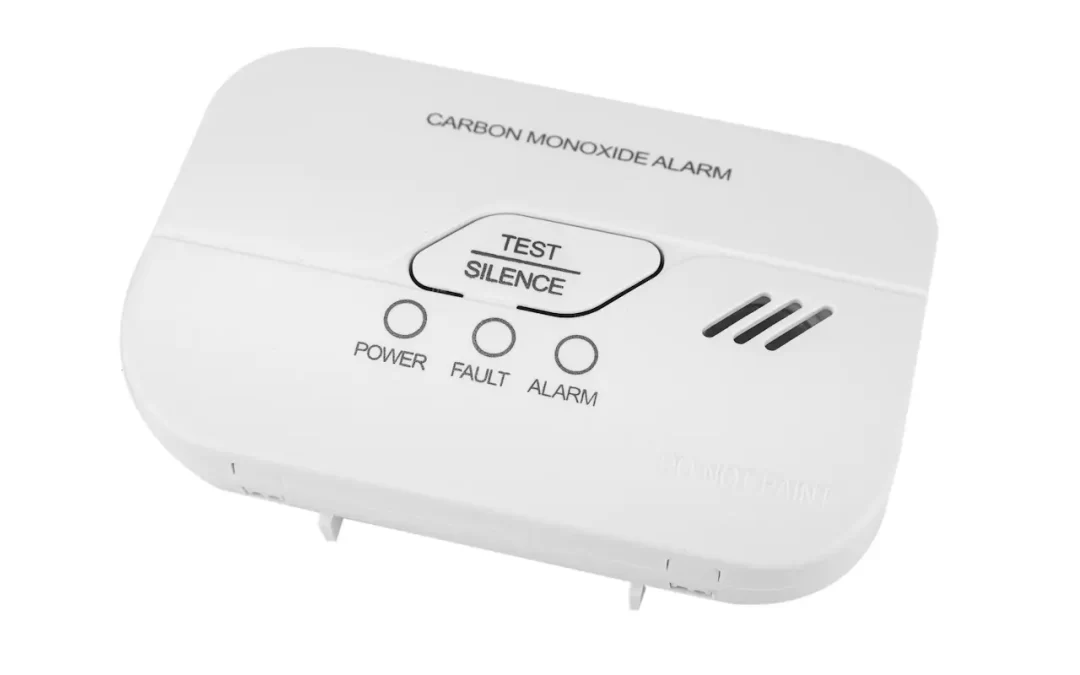Homeowners go to great lengths to ensure their families’ safety and well-being. Carbon monoxide is a colorless, odorless gas that is dangerous if undetected. Understand the risks of CO exposure and take proactive measures to protect your family and maintain a safe living environment. Here are a few things you should know about carbon monoxide in the home.
The Dangers of Carbon Monoxide in the Home
The incomplete combustion of fossil fuels, like gas, oil, wood, and coal, produces carbon monoxide. Common sources of CO in the home include heating systems, water heaters, stoves, fireplaces, and generators. When inhaled, carbon monoxide displaces oxygen in the bloodstream, leading to symptoms from headaches, dizziness, and nausea to unconsciousness and death. Because CO is virtually undetectable without specialized equipment, carbon monoxide poisoning can occur suddenly and without warning.
The Role of CO Detectors
Carbon monoxide detectors are devices that alert occupants to the presence of CO in the home. Like smoke alarms, CO detectors have sensors that detect elevated levels of carbon monoxide and emit a loud sound to warn inhabitants of danger.
Install carbon monoxide detectors on every level of your home, including bedrooms and hallways, to ensure comprehensive coverage. Additionally, testing and replacing batteries in your detectors is essential.
Tips for Keeping Your Home Safe
Install CO Detectors
Equip your home with carbon monoxide detectors per local building codes. Install detectors near sleeping areas and on every level of your home, including basements and attics. Test detectors regularly and replace batteries at least once a year.
Maintain Fuel-Burning Appliances
Schedule annual maintenance inspections for fuel-burning appliances, including furnaces, water heaters, stoves, and fireplaces. Hire a qualified technician to check for leaks, corrosion, and proper ventilation. To prevent carbon monoxide buildup, keep vents and chimneys clear of debris, snow, and ice.
Ventilate Properly to Reduce Carbon Monoxide in the Home
Ensure adequate ventilation to allow for the safe dispersion of indoor air pollutants. Use exhaust fans in kitchens and bathrooms, open windows periodically to let in fresh air, and don’t operate fuel-burning appliances in enclosed or poorly ventilated spaces.
Never Use Generators Indoors
Don’t operate gasoline-powered generators, grills, or other fuel-burning devices indoors, including garages, enclosed porches, basements, and crawl spaces. Always place generators outdoors at least 20 feet away from doors, windows, and vents to prevent CO from entering the home.
Be Mindful of Symptoms
Familiarize yourself with the signs and symptoms of carbon monoxide poisoning, including headaches, dizziness, nausea, confusion, and flu-like symptoms. If you suspect CO exposure or your detector sounds an alarm, evacuate the premises immediately and seek medical attention.
Educate Your Family About Carbon Monoxide in the Home
Teach your family members about the dangers of carbon monoxide and the importance of CO detection and prevention. Establish and practice an escape plan in an emergency, and ensure everyone knows how to respond to a CO alarm.
By prioritizing carbon monoxide detection and implementing preventative measures, you can safeguard your family against CO poisoning. Stay vigilant, be informed, and take steps to create a safer and healthier living environment for you and your loved ones.
FAQs
Can carbon monoxide detectors also detect smoke or fire?
Carbon monoxide detectors have sensors to detect carbon monoxide gas. Smoke detectors are separate devices designed to detect smoke or fire. To keep your family and property safe, having both devices in your home is essential.
Is it safe to use generators indoors during power outages?
No, generators should never be used indoors. Don’t operate your generator inside the garage, on an enclosed porch, in the basement, or in a crawl space. These appliances produce carbon monoxide, and the gas can accumulate in enclosed areas.
What should homeowners do if they experience symptoms of carbon monoxide poisoning but their detectors don’t detect any CO?
If you experience symptoms of carbon monoxide poisoning, such as headaches or nausea, but the detectors don’t register CO, take the symptoms seriously and vacate the house. Other factors may be causing the symptoms, so seek medical attention promptly to determine the cause.
Is it possible for carbon monoxide detectors to give false alarms?
Yes, carbon monoxide detectors can sometimes give false alarms due to factors such as low battery power, dust or debris buildup, or exposure to chemicals or contaminants in the air. However, take every alarm seriously and investigate the cause promptly to rule out danger.
What role does altitude play in carbon monoxide detection and risk?
Altitude can affect carbon monoxide detection and risk because higher altitudes have lower oxygen levels, impacting the body’s ability to detect and respond to carbon monoxide exposure. Homeowners living at higher altitudes may need to take additional precautions and ensure their detectors are calibrated accordingly.
American Dream Home Inspections offers comprehensive home inspection services to customers in New Jersey. Contact us to request an appointment.

